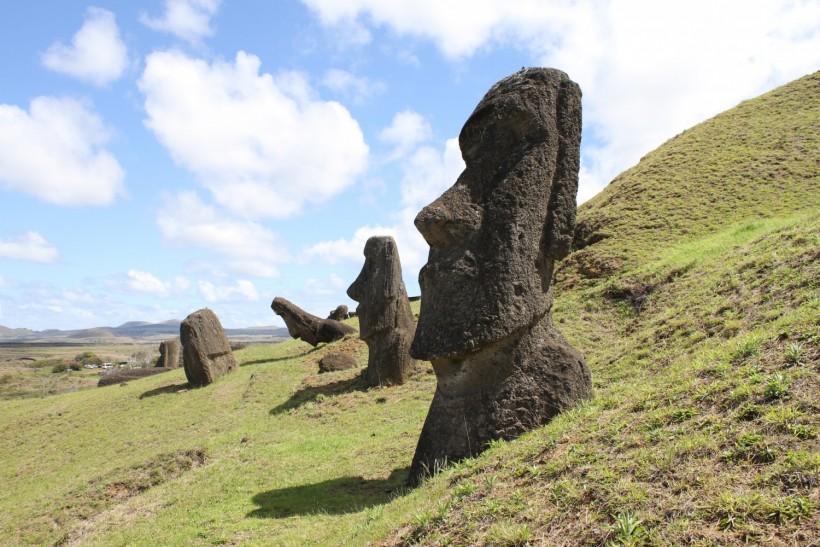On Easter Island, archaeologists have discovered a brand-new moai statue that is 5 feet tall and was made by Rapa Nui natives.

The discovery was made on February 21 in a dry lake bed by volunteers from three Chilean institutions, according to The Guardian. Scientific volunteers made the unusual find from three Chile universities working together on a wetland restoration project inside the Rano Raruku volcano.
Finding the Statue
According to a resident of the Ma'u Henua community who spoke to The Guardian, the laguna, or lake, inside the volcano started to dry up in 2018. According to The Guardian, the locals manage the volcano's national park, Rapa Nui.
The statue was discovered lying on its side and is just over 5 feet tall. It's a tiny statue, according to researchers, and the group will presumably employ carbon-14 dating to determine its age.
Archaeologists found a brand-new moai statue that is 5 feet tall and was created by Rapa Nui indigenous on Easter Island.
According to The Guardian, volunteers from three Chilean organizations discovered on February 21 in a dry lake bed. Scientists from three Chilean institutions collaborating on a wetland restoration project inside the Rano Raruku volcano found the remarkable discovery.
Also Read: Thor's Mighty Hammer Found in Sweden
Easter Island Statues
According to Hunt, the 33-foot tallest moai statue on the island weighs an average of 3 to 5 tons but can reach 80 tons.
Cultural Value
Community elder Maria Elena Hotu explained to "GMA" that moai statues serve as a bridge between people and their ancestors that long passed away.
According to Hunt, the islanders' oral history has claimed that the massive statues propelled themselves.
The moai are now moved from side to side by islanders using rope and their combined effort to give the illusion that they are moving ahead.
The Ma'u Henua Indigenous Community sent The Guardian with a statement that read, "Full-bodied with recognized features but no definite description," regarding the freshly discovered moai.
The first moai to be found inside a laguna in a Rano Raraku crater, the discovery was described as "very remarkable" in the release.
Affected by Climate Change
According to researchers, this most recent discovery was caused by the lake drying up due to climate change. According to Hunt on "GMA," these modifications gave a "unique chance" to research the region.
According to The Guardian, up to 1,000 moai are in the region, and a forest fire damaged several of them on the island in October.
Intense storms followed by prolonged droughts "and exposure to the elements in general" will cause the statues to age more quickly, according to Hunt.
Rising sea levels, according to "Good Morning America," have accelerated the erosion process along the shore, where moai statues stand guard over the island.
According to the source, islanders are constructing a retaining wall to assist in stopping more damage.
Related Article: Mysterious "Spanish Stonehenge" Built Around 5000 B.C.No Longer Submerged Due to Drought
For more similar news, don't forget to follow Nature World News!
© 2024 NatureWorldNews.com All rights reserved. Do not reproduce without permission.




![Climate Change is Reducing Dust Levels Worldwide as Arctic Temperature Warms [Study]](https://1471793142.rsc.cdn77.org/data/thumbs/full/70320/280/157/50/40/climate-change-is-reducing-dust-levels-worldwide-as-arctic-temperature-warms-study.jpg)
